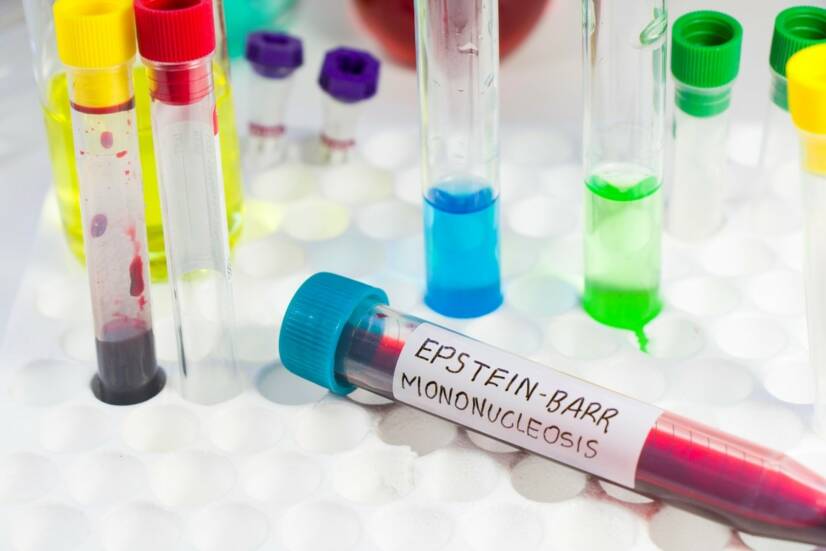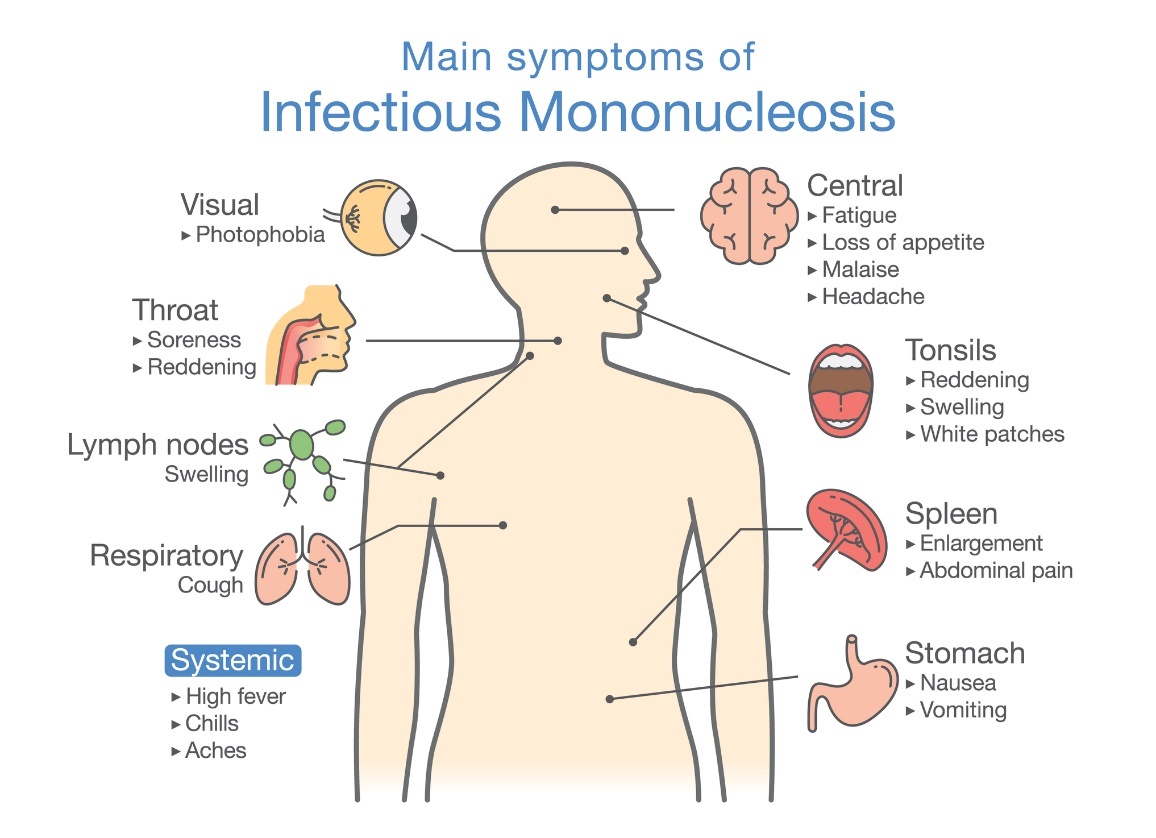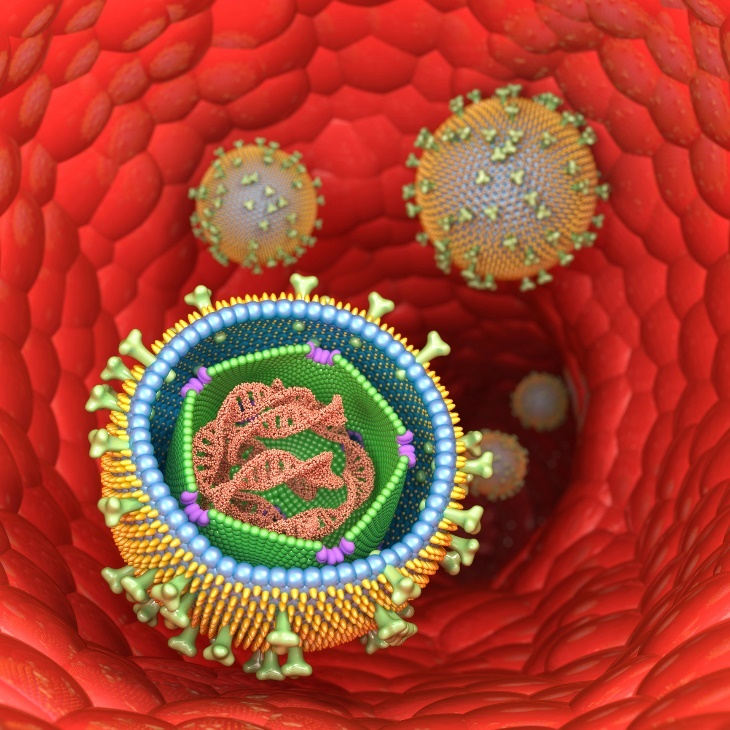- ncbi.nlm.nih.gov - Infectious mononucleosis, Samantha K Dunmire and Kristin A Hogquist
- healthline.com - Everything You Need to Know About Mono. Jacquelyn Cafasso
- medlineplus.gov - Infectious Mononucleosis: Also called: Glandular fever, Kissing disease, Mono, Mononucleosis National Library of Medicine
Infectious Mononucleosis: Causes, Symptoms, Treatment

Infectious mononucleosis is a worldwide viral disease accompanied mainly by high fever, angina and enlarged lymph nodes. The virus is spread by interpersonal contact. The disease is mainly transmitted by saliva and is therefore also known as "kissing disease". What are the symptoms of infectious mononucleosis, available treatment options and prevention?
Most common symptoms
- Sweating
- Abdominal Pain
- Headache
- Sore Throat
- Joint Pain
- Limb pain
- Pain when swallowing
- Muscle Pain
- Lower Abdominal Pain
- Spirituality
- Fever
- Increased body temperature
- Nausea
- Rash
- Petechie
- Full nose
- Fatigue
- Vomiting
- Redness of the conjunctivae
- Winterreise
- Accelerated heart rate
- Enlarged lymph nodes
- Liver enlargement
Characteristics
Mononucleosis is a disease resulting from infection with human Epstein-Barr virus (EBV), or in fewer cases human cytomegalovirus (CMV), Toxoplasma gondii, HIV or adenovirus, but these are subsequently classified as "mononucleosis-like syndromes".
Infectious mononucleosis is widespread worldwide, but most commonly affects white people and people of childhood and young adulthood. By adulthood, more than 90% of the population has already developed antibodies.
In most cases, mononucleosis is benign with few symptoms.
Infection with mononucleosis is usually not severe, and without heavy treatment, symptoms resolve on their own within 1 to 2 months.
Infectious mononucleosis is most likely to be overcome by a person only once in a lifetime. However, the virus can persist in the body in a dormant form.
In rare cases, especially when the immune system is severely weakened, in situations of excessive stress, serious illness, pregnancy or other situations that put a strain on the body, the EBV virus can reactivate in the body and manifest itself as a different type of disease.
Causes
Infectious mononucleosis is transmitted by Epstein-Barr virus mainly through oro-pharyngeal secretions, saliva and blood.
The main gateway is the respiratory tract.
Transmission is also possible through sexual contact. However, the most common mode of transmission is saliva, which is why the disease is nicknamed "kissing disease" or "infant disease".
In some cases, the virus can be passed from an infected mother to the baby's fetus.
Mononucleosis is spread mainly by kissing, sharing a cup and cutlery with another person, sneezing and coughing.
The Epstein-Barr virus multiplies in the human body using the cells of the nasopharyngeal mucosa, salivary glands and lymphoid tissue of the tonsils, and then spreads throughout the body via the blood.
The incubation period of infectious mononucleosis is approximately 4-6 weeks from contact with an infected person.
However, it is possible to notice some of the first symptoms after 1-2 weeks. These are mainly fatigue, increased temperature and enlarged lymph nodes in the neck and armpits.
In untreated mononucleosis, a more serious complication of the disease may occur in some rare cases.
These include airway obstruction, liver damage, meningitis, inflammation of the heart muscle and other complications affecting the hematological, neurological and cardiac functions of the body.
One of the most serious complications is splenic rupture, which is usually associated with intense abdominal pain and signs of hemorrhagic shock.
In rare cases, in young boys infected with Epstein-Barr virus, it can cause Duncan's disease - a genetic immunodeficiency disease linked to the X chromosome causing a mutation in the SH2D1A gene.
It is therefore always necessary to have a professional examination and determination of treatment by a doctor.
Symptoms
The course of mononucleosis infection is individual: from an asymptomatic (without symptoms) course, to commonly occurring symptoms, to rarely serious health complications.
In most cases of infection under the supervision of a physician, this is a benign course of the disease.
Infectious mononucleosis is also nicknamed glandular fever because of the enlargement of the lymph nodes, especially in the neck armpit and groin area, and the enlargement of the spleen and liver organs (splenomegaly and hepatomegaly).
The disease is accompanied by headache, sore throat (tonsillitis), swelling and redness of the nasopharynx, pain and discomfort in the abdominal area, increased excessive fatigue, general body weakness, nausea, lack of appetite and increased temperature up to a fever of about 39-40 degrees.
The presence of petechiae, a small reddish spotty rash on the soft palate of the oral cavity, is also possible.
Possible manifestations and symptoms of infectious mononucleosis:
- Enlargement of lymph nodes
- Enlargement of the spleen (splenomegaly)
- Liver enlargement (hepatomegaly)
- Fever
- Increased fatigue
- Chronic fatigue syndrome
- General weakness
- Malaise
- Lack of appetite
- Vomiting
- Abdominal pain
- Headache
- Sore throat
- Tonsillitis
- Petechia (rash on the roof of the mouth)
- Skin rashes
- Muscle pain
- Swelling of the nasopharynx
- Swelling of the eye area

Diagnostics
Diagnosis is initially made on the basis of a professional examination by a doctor. The examination includes taking a medical history and an aspectual check of the condition of the nasopharynx.
As part of a palpation examination, the doctor diagnoses the condition of enlargement of the lymph nodes and abdominal organs. The doctor uses the imaging diagnostic method of ultrasonography, in particular, to accurately depict the internal structures of the liver.
In most cases, a sample of the lining of the throat is taken for microbiological laboratory tests. The result of the test determines the presence of mononucleosis virus in the sample taken.
A blood sample is taken from the patient for haematological examination. On the basis of a serological test, the blood count, the levels of liver tests, inflammatory processes and the levels of white blood cells in the patient's organism are detected.
Heterophilic blood tests for antibodies can be used to demonstrate the presence of EBV in the body, and the exact level of antibodies can also be used to distinguish the current phase (stage) of mononucleosis.

Prevention of infectious mononucleosis
The primary prevention of mononucleosis virus is a healthy lifestyle, stability of the immune system and high immunity of the body.
It is advisable to prevent the spread of infection. In case of the occurrence of the disease in the family and close surroundings, it is recommended to disinfect objects that have come into contact with the saliva of an infected person and are a potential source of infection with the virus.
Infectious mononucleosis is mainly transmitted through saliva and therefore physical contact in the form of kissing and sharing of communal cups and cutlery should be limited.
Infectious mononucleosis in pregnancy
EBV disease can also affect adults. If a woman has not yet had EBV, she may get sick more easily because of a weaker immune system during the gestation period.
Although mononucleosis caused by EBV is a herpes virus, in most treated cases it does not leave any effects on the fetus in the mother's body. EBV should not be transmitted by the trans-placental route.
However, a consultation with a doctor is always necessary due to individual health conditions.
Because of the potential risk of other dangerous herpes viruses causing infectious mononucleosis (Toxoplasma, CMV...), it is necessary to have a professional examination and treatment by a doctor.
Throughout the entire gestation period, regular monitoring of both the fetus and the mother by a gynecologist is necessary.
Discoverers of Epstein-Barr virus mononucleosis
For the first time in 1885, infectious mononucleosis was described by the Russian physician Filatov under the name of lymphadenopathy. Subsequently, Dr Pfeiffer referred to the disease as glandular fever because of its symptoms.
In 1964, virologists Sir Michael Anthony Epstein and Yvonne Barr first demonstrated the presence of the herpes virus of infectious mononucleosis using a microscope.
They were able to prove the existence of the virus from Burkitt's lymphoma tumour cells using an electron microscope.
Herbal natural aid for liver support
Among the most well-known herbs that have a beneficial effect on the liver is the plant Silybum marianum (milk thistle). The herb contains a substance called silymarin, which has detoxifying and antioxidant effects.
It contributes to the restoration and protection of liver cells. It helps to protect the liver from damage while increasing its resistance. Although silymarin is safe, it is not recommended for children under 5 years of age, pregnant and breastfeeding women.
It is not recommended for cardiovascular diseases and certain allergies (nuts, seeds). It is necessary to consult a doctor about the appropriateness of taking this herb, taking into account the individual state of health of the patient and the possible contraindication to the use of the herb with pharmacotherapy (drugs and medicines).
How it is treated: Infectious Mononucleosis
Infectious mononucleosis: medication and diet
Show moreMononucleosis Video 1: Mononucleosis I
Infectious Mononucleosis is treated by
Other names
Interesting resources










